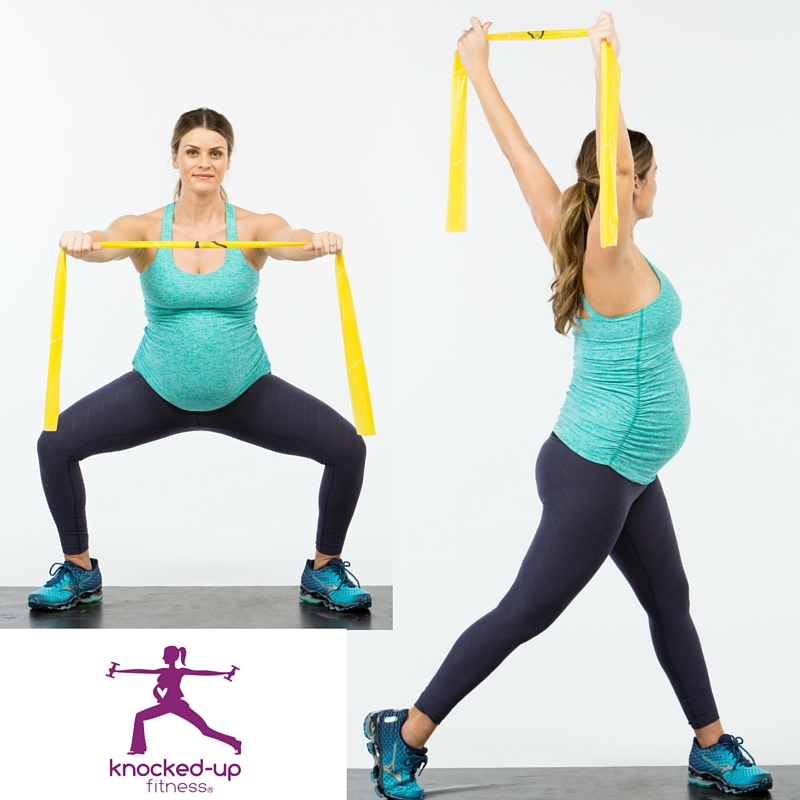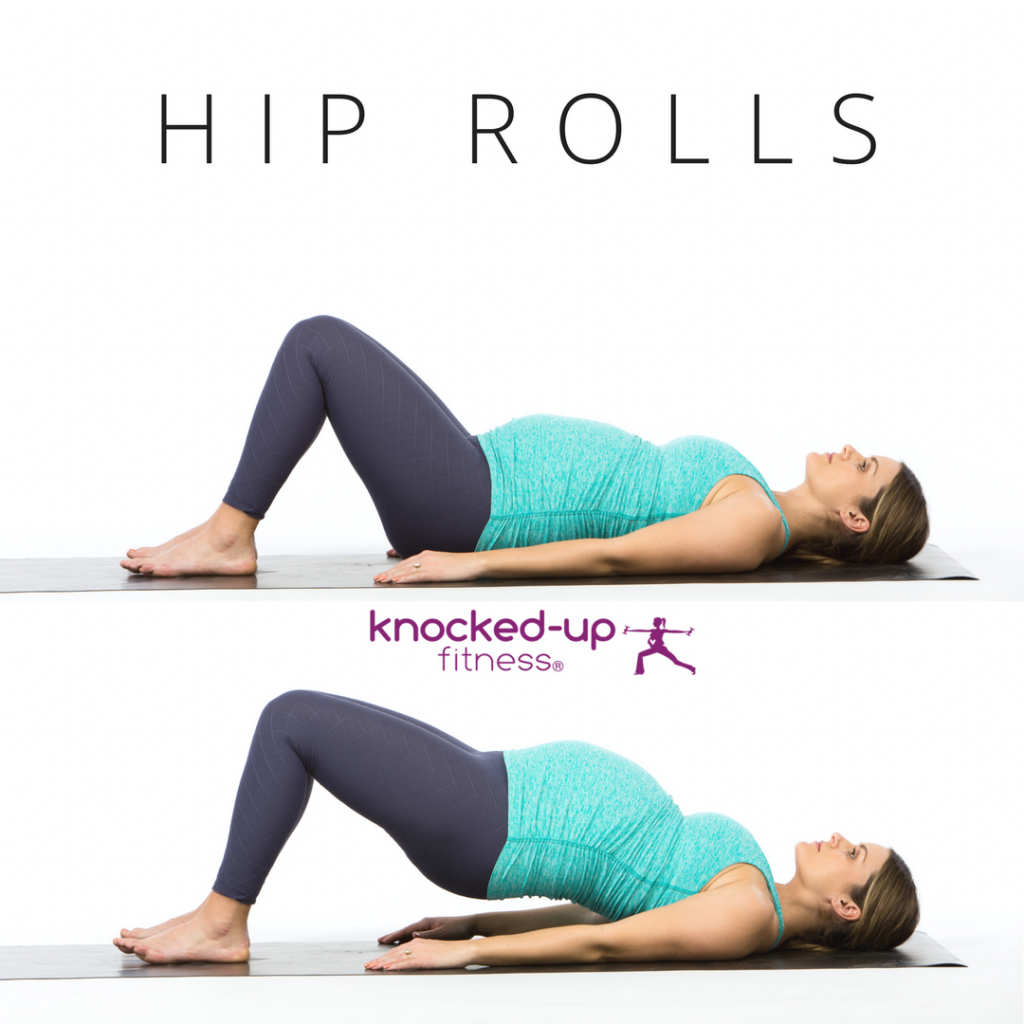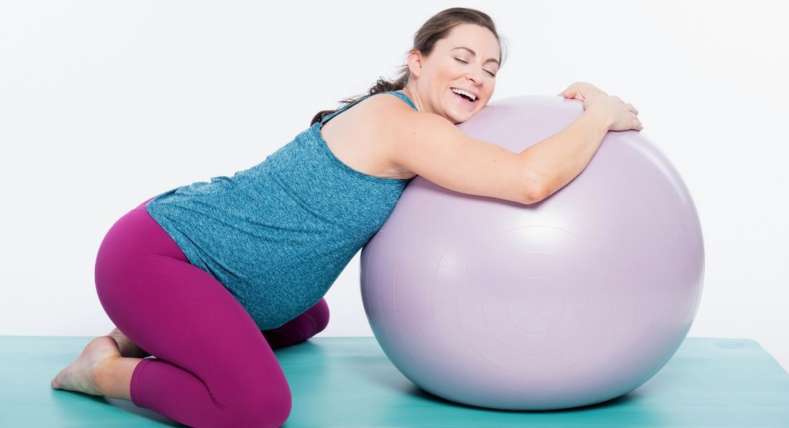Pelvic floor exercises are a way to strengthen your pelvic floor muscles that are essential for women throughout our lifetime. Considering that at least 50 percent of women experience pelvic floor difficulties at some point in their lifetime and 1 in 10 ends up undergoing surgery for this issue, it seems like more women would be talking the topic of pelvic floor exercises.
The fact is that the pelvic region is a rather private area of the body and one that we generally don’t bring up at the brunch table with our besties. And while this is understandable, the fact is that pelvic floor exercises are essential for women’s health, particularly when they’re expecting.
“More prescribed pregnancy exercises?” you might be thinking at this point, rolling your eyes in the general direction of the sky above you. After all, when you’re already doing more than enough exercises to tone your tummy and strengthen your body in anticipation of The Big Event, why should you even pause to think about pelvic floor exercises? Well believe it or not, the subject of “pelvic floor exercises” is a vital one for many pregnant women, as the pelvic floor muscles play a basic and highly essential role in the process of pregnancy, childbirth and, for that matter, of life in general.
The pelvic floor is considered the base or core of the body. This owing to the fact that the pelvic floor is the literal muscular sling that carries and supports the torso. The pelvic muscles also comprise that integral muscular network that supports the bowel, the bladder, and the uterus. The pelvic floor, meanwhile, is that muscular layer that stretches like a supportive foundation from the pubic bone to the tip of the backbone.
When these muscles contract, these specific organs are lifted and the vaginal, anal and urethral openings tighten. When muscles relax, the body can release urine and feces and perform other biological functions up to and including pregnancy.
It’s only understandable that the pelvic muscles and the pelvic floor would play a pivotal role in the development and delivery of a baby. During those nine months of expectancy, the pelvic floor muscles serve to support the growing fetus. And during the delivery process, these very same muscles help to facilitate the birth of your baby just as it does other biological processes. It is for this very reason that pelvic floor exercises are important for everyone and why pelvic floor exercises for women are particularly needed, especially during the course of one’s reproductive years.
Without the benefit of exercise and a healthy lifestyle, pelvic muscles can weaken; sometimes as a result of childbirth, also possibly as a side effect of age, heavy lifting, obesity, and certain health conditions. Amazingly, even excessive coughing can weaken these tender muscles!

Pelvic Floor Muscles: The Core of the CORE
The weakening of pelvic floor muscles can lead to any number of adverse health effects, not the least of which are incontinence, painful intercourse, other serious physical discomforts such as SI joint pain and pain in the lower back and hips, and problematic pregnancies in the future. Even under the best of circumstances and with the fittest of moms, the experience of pregnancy is bound to stress and strain the pelvic floor.
Ah, but it doesn’t have to be this way. When you undertake a reasonable and regular regimen of pelvic floor exercises at any time during your life, then your pelvic floor muscles and your body as a whole will strengthen and revitalize. And when you perform frequent and reasonably paced pelvic floor exercises during pregnancy, you are bound to have an easier and empowered pregnancy and delivery process.
Pelvic floor exercises will strengthen the muscles surrounding your bladder and vagina. You will be less likely to experience stress incontinence and leakage during your pregnancy, and will likely even experience a smoother delivery.

Pelvic Floor Exercises For Women
Pelvic floor exercises for women can be even more beneficial to expectant mothers dealing with the all too prevalent issue of pelvic floor prolapse. This is what occurs when the pelvic muscles weaken, causing corresponding organs to drop lower into the pelvis, thus creating a noticeable bulge and related symptoms such as incontinence and sexual dysfunction.

Pelvic Floor Exercises After Birth
And as much as pelvic floor exercises support and advance the cause of prenatal health, pelvic floor exercises after birth are equally essential. Exercise helps you to bounce back faster after birth as well, helping you get back in shape at a faster rate and in the case of pelvic floor exercises will help you avoid frequent incontinence post delivery and have an easier go of it during future pregnancies.
In general, people of all genders and life situations, whether they plan to have children or not, should make a practice of performing a steady regimen of pelvic floor exercises. Exercise keeps you healthy and strong, and, for just about anyone, enhanced pelvic floor muscles can mean greater ease of biological functions (easier and more secure peeing, for instance – yes!), a better love life, and a firmer, more supportive cradle of support for your core.

Pelvic Floor Exercises Step By Step
So, have we convinced you yet that you really, really need to be doing pelvic floor exercises, especially with a little one on the way? Well then sit back and do allow us to instruct you on how to do pelvic floor exercises step by step. Or better yet, get up and actually do the exercises we suggest, for the good of you and your little one!
Now before you begin any exercise routine or regimen, be sure to consult your physician regarding the specific exercises that you plan to do, and in what quantity and frequency/time increments. Let your doctor be your workout partner; as he/she is the person who knows your body best, and allows them to pick and choose the exercises best for you. Beyond this basic directive, we hope that you also will consider this carefully selected regimen of pelvic floor exercises:
Exercise Primers:
Breathe with your pelvic floor. While doing pelvic floor exercises, coordinate your diaphragm and pelvic floor–with your ribs moving with each breath, inhaling deep breaths and exhaling and expelling them outward. An expanding diaphragm will apply pressure to the pelvic floor, strengthening that floor in the process.
Feel free to incorporate light weights, foam rollers and exercise balloons into your workout–with the full permission and approval of your physician and personal trainer, of course.
Get to the core of the matter. As mentioned previously, the pelvic floor is for all intents and purposes the central core of the anatomy. So be certain that the exercises you choose flex, shape and tone key core areas such as hips and abs, as well as–naturally–the muscles of the pelvic area.
Be sure to step tall and proud into this new and invigorating pelvic floor exercises regimen–most literally. Keep your posture straight and your head aligned at all times, both when exercising and when walking and moving in general.
Cool up, down and all around. As you would with any exercise routine, warm up and cool down before and after your newly adopted routine of pelvic floor exercises. Feel free to stop and rest if you feel weary or stressed, and cease all movement immediately if you feel pain.
Now let’s get down to the basics of pelvic floor exercises, done the right way and with expectant moms in mind:
Pelvic Floor Exercises During Pregnancy: The Kegels
These are the best pelvic floor exercises during pregnancy! Kegel exercise is the most basic and classically practiced exercise maneuver in the pelvic floor exercises regimen. And it does not involve a single weight or a solitary complex twist, turn or stretch. The Kegel exercise, in point of fact, is one of those few exercises you can perform sitting down, perfect for strength training while pregnant…
The goal and objective of the kegel exercise involves the contraction and relaxation of the pelvic floor muscles, toward the strengthening and repair of these same muscles.
-
- The muscles that you will be working here are the same ones that you use most prominently when you go to the restroom. Start off by identifying these muscles, and ensuring that your bladder is empty before you commence the exercises.
-
- Contract your pelvic muscles.
-
- Hold these muscles for about five seconds.
-
- Release these same muscles for an interval of five seconds.
-
- Repeat this exercise as needed, up to 10 times consecutively and three times per day.

Squats
What exercise regimen, I ask you, does not involve that magical maneuver known as the squat? This single exercise works all of the body’s major muscles; strengthening and empowering them in the process. And since the movement involves–well–squatting to the comfortable extreme (well, duh!), then it is particularly useful in working one’s pelvic muscles. These pelvic floor exercises, in other words, stand to benefit far more beyond the target muscles for this particular regimen. Here’s how ya do ‘em!
Squats with Rotation:
-
- Part you’re feet to equate shoulder width, then rotating your legs outward from the hip.
- Keep your head upward as you squat down. Focus your motion on your hips and behind without exerting the back.
- Stand up and rotate toward a single side. Rotate your back leg and pivot up on your toes, all the while extending your arms upward and away from you.
- Stand tall, lifting from your core.
- Rotate in the direction of the center, repeating the exercise on alternating sides.
- Do 10-20 repetitions or as many as you can that feel comfortable.

Hip Rolls
Hips Rolls make for an excellent lower body workout; here’s how we roll!
-
- Roll your spine upward, a single vertebra at a time, as you articulate your spine.
-
- Pause and inhale deeply once reaching the top.
-
- Breathe out nice and easy, again articulating the good ole’ spine as you return roll down the length of the mat.
-
- When your back is to the mat, breathe in and arch your back.
-
- Breathe out once again before commencing with your next roll, which you should do in five to 10 repetitions.

Pelvic Floor Exercises for Prolapse: Pelvic Tilts
No regimen of pelvic floor exercises would be complete without the tilt!
-
- Lay on your back as you arch its lower part, bending your knees with your feet hip-width apart.
-
- Breathe deeply and inwardly out to the sides and the back of your rib cage, relaxing your pelvis and pelvic floor in the process.
-
- Exhale, perform a Kegel exercise, then zip your stomach upward through the tip of your head, permitting your pelvis to slightly tilt.
-
- Inhale and return to the starting point, arching your back and relaxing your pelvis and pelvic floor.
Get in on the ground floor of pregnancy fitness; do some pelvic floor exercises today!





12 Comments
This is a very informative post on pelvic floor exercises . Squats with rotation are definitely very useful.
This is an ensure that before you are ready to join a gym or even climb on top of the elliptical exercise trainer, a doctor’s advice is heeded. Before you begin to use one, ask a personal trainer or the fitness equipment instructor to show you how to use the elliptical trainers, this will help you better in the workout.
Information is very valuable for the health of women and the fetus in this article and I would like to share a wonderful topic for women’s health before and after pregnancy http://cut-urls.com/p8Lac3